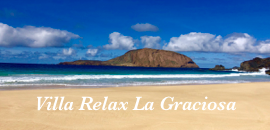Maspalomas Wildlife
Introduction
The dune fauna is located mainly in the areas of greatest vegetation therefore, it is most abundant in the fixed dunes rather than the mobile ones. The birds, being the largest group, are represented by species related to desert ecosystems (most of them extinct) and other species typical of bush areas.
The Hoopoe (Upupa epops)
Is a very showy breed due to the crest it has. This typical desert bird is abundant in the dunes. It feeds on the invertebrates it hunts invertebrates by burying its beak in the sand.
The giant lizard of Gran Canaria (Gallotia stehlini)
Is a reptile that can reach the length of 80 cm. This makes it the largest of lizards of the Canaries. It feeds off of plant products, although the young ones are insectivores. It is abundant in the dunes and in spite of its appearance, it is completely harmless.
The Maspalomas Pond:
The migratory birds, like the tourists that visit the beach of Maspalomas, find an excellent winter refuge, exempt of the rigours of the European climatic.
The Whimbrel (Numenius phaepus)
Is one of Maspalomas most loyal migratory birds. It characterized by the large curved beak it uses to catch aquatic invertebrates. It also hunts land invertebrates in the dune sands close to the pond.
The very white and elegant Little Egret (Egretta garzetta)
Is an expert fisher and invertebrate hunter, which they stalk for long periods of time. The egret uses it long beak to harpoon its prey.
Sanderling (Calidris alba)
This small sandpiper is one of the most abundant migratory birds of Maspalomas. Sometimes you can see bands of up to 100 specimens. It feeds off of the small invertebrates it catches on the muddy edges of the Pond.
One of the most spectacular birds that visit the Maspalomas Pond is the Grey Heron (Ardea cinerea). It is an expert fish predator catching them easily after stalking them for long periods of time.
Turnestone (Arenaria interpres)
This species, as its name suggests searches for food under the stones. It is more common on the beach than around the pond itself.
The birds that nest in the Pond are considerably fewer than the migratory birds. There are four nesting species of aquatic birds: Moorhen (Gallinula chloropus), Coot (Fulica atra), Little Ringed Plover (Charadrius dubius) and Kentish Plover (Charadrius alexandrinus).
In the past, before tourism development, there were other aquatic species living in the Pond, but have disappeared nowadays, such as the Marbled Teal (Marmaronetta angustistirostris).
The Moorhen (Gallinula chloropus)
Is the most abundant of the aquatic species in the Pond of Maspalomas. It feeds off of the aquatic vegetation.
Very similar to the previous species is the Coot (Fulica atra)
It differs from the previous species by its white beak, which contrasts with it black plumage. It feeds off of the aquatic vegetation. After being absent for nearly a century, in 2004, it has nested once again in the Pond.
The Kentish Plover (Charadrius alexandrinus)
Is one of the scarcest birds in Gran Canaria, due to the deterioration of its habitat, beaches and coastal puddles, by the housing projects. Maspalomas is one of its main refuges. It nests on the ground, hence the importance of being careful stepping around the Pond.
















